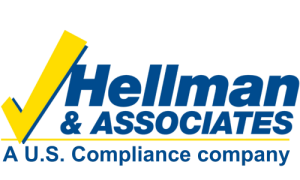OSHA Proposed Heat Stress Standards
Just in time for the predicted hot summer, OSHA released its long-anticipated heat stress standard. It is a broad standard that, if finalized, will apply to employers in both construction and general industry. This standard made the news when it was featured in national media headlines.
It is a complicated standard but the primary requirement is that employers develop a site-specific Heat Illness and Injury Prevention Plan (HIIPP). A HIIPP must include the following:
- A comprehensive list of the types of work activities it covers
- All policies and procedures necessary to comply with the standard
- An identification of the heat metric the employer will utilize
- A heat monitoring plan
- A heat emergency response plan
Several states, such as California, Washington, and Minnesota, have developed their own heat stress standards, which OSHA encourages as examples for others to follow. These state standards often include specific requirements for water, rest breaks, shade and training tailored to the local climates.
It is a somewhat complicated standard. For example, whether or not employees are covered depends upon if they can reasonably be expected to work in temperatures exceeding what OSHA calls the “initial heat trigger.” (The initial heat trigger is a National Weather Service heat index or a “wet bulb globe temperature” equal to recommended alert limits set by the National Institute for Occupational Safety and Health.) If employees cannot be expected to work in conditions reaching the initial heat trigger or if they are expected to do so for durations of 15 or less minutes per hour, the standard does not apply to them. Other exclusions from the standard include emergency services, indoor work with air conditioning, telework and indoor sedentary work.
The new standard also provides detailed procedures employers must follow when employees experience symptoms of heat-related illness. It also contains training procedures that must be implemented for both employees and supervisors.
The standard has not yet been published in the federal register. Once it is, it will become effective within 60 days and employers will have 150 days to come into compliance. In the meantime, OSHA will continue to enforce heat stress issues through enforcement of the General Duty Clause.
This action by OSHA is the result of an extended rulemaking process based on the increased number of heat-related illnesses experienced by workers. Employers are encouraged to review the standard carefully and begin implementing its requirements.
A copy of the proposed Standard is available by clicking on this link where you can download details. Hellman & Associates stands ready to educate your company and assist by providing training. At Hellman & Associates, we understand the importance of proactive risk management, especially during the summer months when the heat can maximize safety challenges. Our team of experienced professionals specializes in developing tailored solutions that prioritize safety, regulatory compliance and operational efficiency. Partner with Hellman & Associates to elevate your safety initiatives. Contact us today to learn more about our services and how we can support your annual safety goals.
OSHA Proposed Heat Stress Standards Read More »
